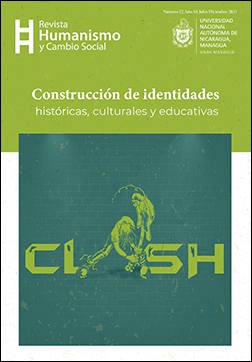The environmental agenda: the role of the media in Nicaragua
DOI:
https://doi.org/10.5377/hcs.v21i21.17662Keywords:
Environmental education, media, training, journalism, televisionAbstract
The purpose of this paper is to know the media agenda of Nicaraguan television newscasts. For this purpose, it was decided to take as a reference the following newscasts: Crónica TN8 of Canal 8, TV Noticias of Canal 2 and Noticiero Acción 10 of Canal 10. The objective was to reflect on the role played by the television media in environmental coverage. In addition to identify if the informative contents are focused on environmental education, and, finally, to analyze the need for specialized training in environmental journalism, which allows the communicator to address these issues with a more critical and reflective vision oriented to the care of our common home, the Planet Earth. For the development of this paper, a documentary review was carried out, covering the phases of search and compilation of information up to its analysis and interpretation. The sources consulted were scientific articles published in electronic repositories, as well as the monitoring of news programs, considering variables such as: title of the news, content, type of coverage and verification of the same in audiovisual and written format, through the websites of the television media. This was carried out in the first quarter of 2023. The main conclusions point out that there is little interest of the media in promoting among their audiences a culture oriented to conserve and preserve the environment; which could be attributed to three important aspects such as: the lack of knowledge that journalists have on the subject, a second aspect is that this type of content is not considered attractive and therefore does not generate ratings and finally it is not lucrative in terms of sales for the media. It is important to mention that there is a gap in the writing of news content, limited only to the coverage of the event, without providing any informative and preventive value. The lack of educational production, could lead to a false understanding in their audiences that everything is fine, when in fact this articulated work between institutions, private companies and the State is needed.
Downloads
120
References
Asamblea Nacional (2014). Constitución Política de la República de Nicaragua con sus Reformas Incorporadas, publicada en La Gaceta No. 32 del 18 de febrero de 2014. https://www.asamblea.gob.ni/assets/constitucion.pdf
Asamblea Nacional (2014). Ley No. 217 “Ley General del Medio Ambiente y los Recursos Naturales” y sus Reformas Incorporadas, publicada en La Gaceta No. 20 del 31 de enero del 2014. http://legislacion.asamblea.gob.ni/normaweb.nsf/3133c0d121ea3897062568a1005e0f89/f9264c09bd98d79706257c7d005668fd?OpenDocument
Asamblea Nacional (2006). Ley No.582 “Ley General de Educación”. Publicada en La Gaceta, Diario Oficial No.150 del 03 de agosto de 2006. http://legislacion.asamblea.gob.ni/normaweb.nsf/($All)/B2FBC86E5FD975420625755B00765A99
Cervantes Loredo, M. T. (2015). Educación ambiental en los medios de comunicación. Ciencia uanl. http://eprints.uanl.mx/2660/1/la_educacion_ambiental.pdf
Cumba Castro, E. A. (2020). La educación ambiental en los medios televisivos. Estudio de caso: Oromar TV. ALTERIDAD. Revista de Educación, 15(1), 125-138. http://scielo.senescyt.gob.ec/scielo.php?pid=S1390-86422020000100125&script=sci_arttext
Guamán, L. et al (2018) “La cobertura mediática y la Responsabilidad Social Empresarial de los medios de comunicación”. En: Esteban Andrade Roda. Responsabilidad Social Empresarial: claves del nuevo paradigma. (pp. 142-158). Editorial UTN.
Jukofsky, D. (2000). El periodismo ambiental: Una especie en extinción. Chasqui. Revista Latinoamericana de Comunicación, (070), 0. https://www.redalyc.org/pdf/160/16007004.pdf
ONU (1972a). Conferencia Mundial sobre el medio ambiente. https://www.un.org/es/conferences/envionment/stockholm1972
ONU (1972b). Informe de la Conferencia de las Naciones Unidas sobre el Medio Humano. https://documents-dds-ny.un.org/doc/UNDOC/GEN/N73/039/07/PDF/N7303907.pdf?OpenElement
Parratt Fernández, S., (2014). El periodismo ambiental como especialidad en las universidades españolas. Prisma Social, (12), 335-363. https://www.redalyc.org/pdf/3537/353744531010.pdf
Santiago Rivera, J. A., (2008). La problemática del ambiente, la educación ambiental y el uso didáctico de los medios de comunicación social. Investigación y Postgrado, 23(2), 241-270. file:///C:/Users/SISCOM/Downloads/65815752009.pdf
Downloads
Published
How to Cite
Issue
Section
License
Copyright (c) 2023 Universidad Nacional Autónoma de Nicaragua, UNAN-Managua

This work is licensed under a Creative Commons Attribution-NonCommercial-ShareAlike 4.0 International License.




